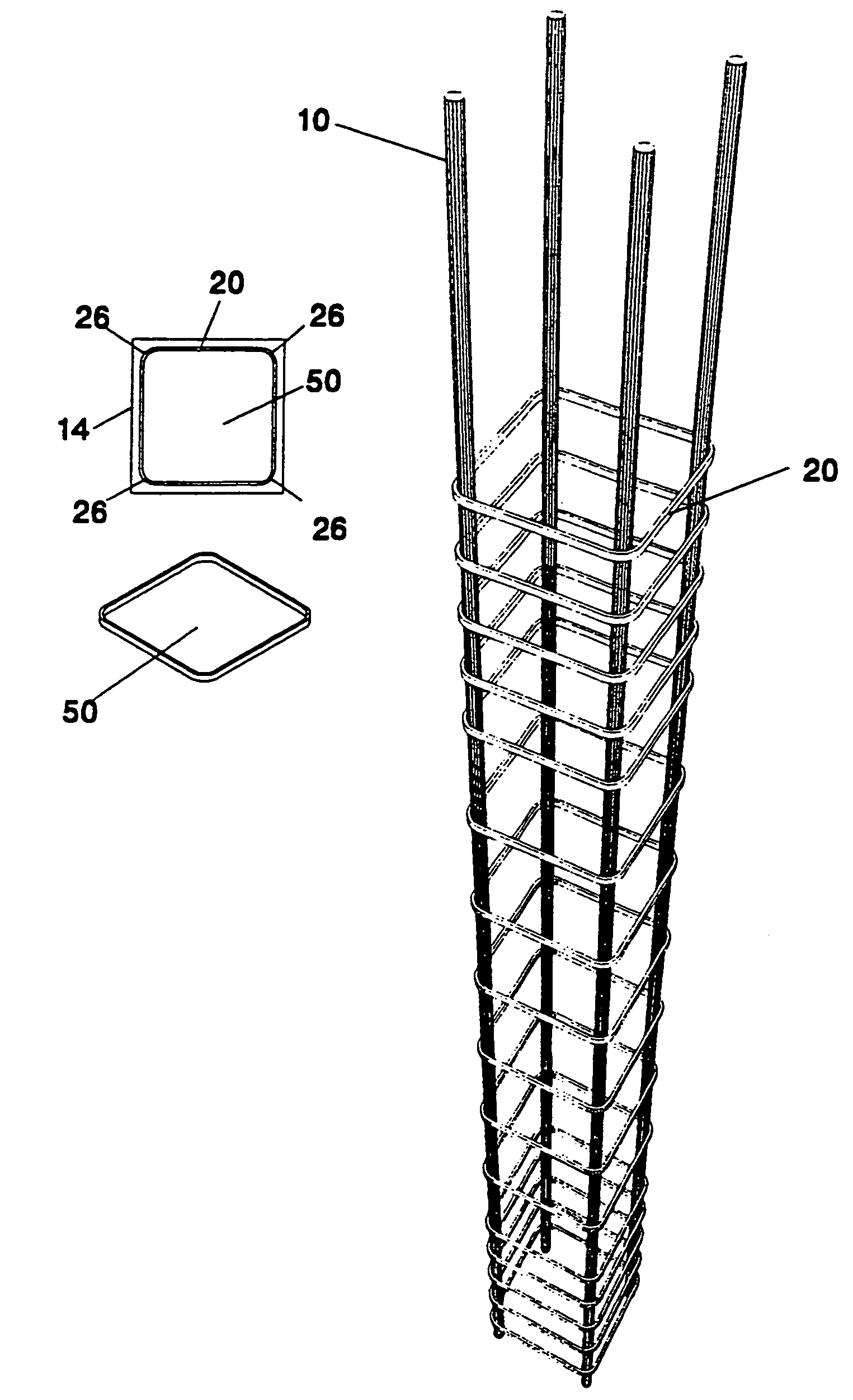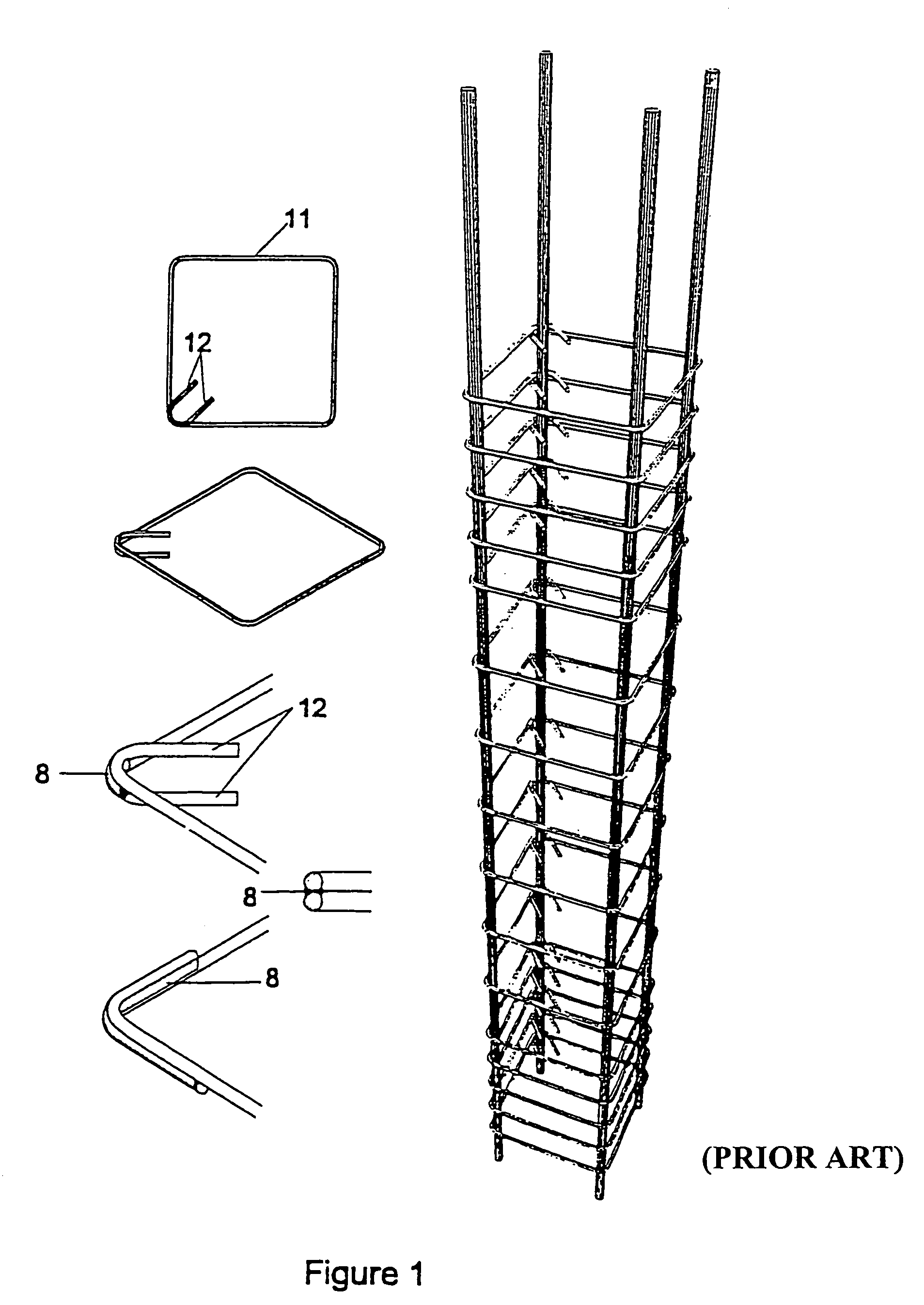Cellular stirrups and ties for structural members
a structural member and cellular technology, applied in the direction of structural elements, pillars, building components, etc., can solve the problems of high cost, high steel requirement, excessive weight, etc., and achieve the effect of reducing the difficulty of spiraling during the reinforcement of the structural member
- Summary
- Abstract
- Description
- Claims
- Application Information
AI Technical Summary
Benefits of technology
Problems solved by technology
Method used
Image
Examples
Embodiment Construction
[0064]FIG. 3 resents a stirrup within the framework 14. The stirrup consists of a load-bearing element 20 which is a rectangular ring and closed cell 50 having an inner periphery and an outer periphery. At the corners of the ring 50, there is a provision of special places 26 for receiving the rebars 10. These places may be formed like the shape of the perimeter of the rebars 10, so that the rebars are received within the inner periphery of the dosed cell and abut against it.
[0065]During the loading of the structural element and the rebars 10, axial tensile forces are created in the cross-section of the bearing element 20. Because of the closed cellular shape of the bearing element, the axial tensile forces are not transferred to the concrete, which surrounds the reinforcement.
[0066]The load-bearing element 20 of the stirrup of FIG. 3 has a continuous cross-section and thus there are no free ends. In this way anchoring of the stirrup is completely avoided. The dosed cellular shape ha...
PUM
 Login to View More
Login to View More Abstract
Description
Claims
Application Information
 Login to View More
Login to View More - R&D
- Intellectual Property
- Life Sciences
- Materials
- Tech Scout
- Unparalleled Data Quality
- Higher Quality Content
- 60% Fewer Hallucinations
Browse by: Latest US Patents, China's latest patents, Technical Efficacy Thesaurus, Application Domain, Technology Topic, Popular Technical Reports.
© 2025 PatSnap. All rights reserved.Legal|Privacy policy|Modern Slavery Act Transparency Statement|Sitemap|About US| Contact US: help@patsnap.com



